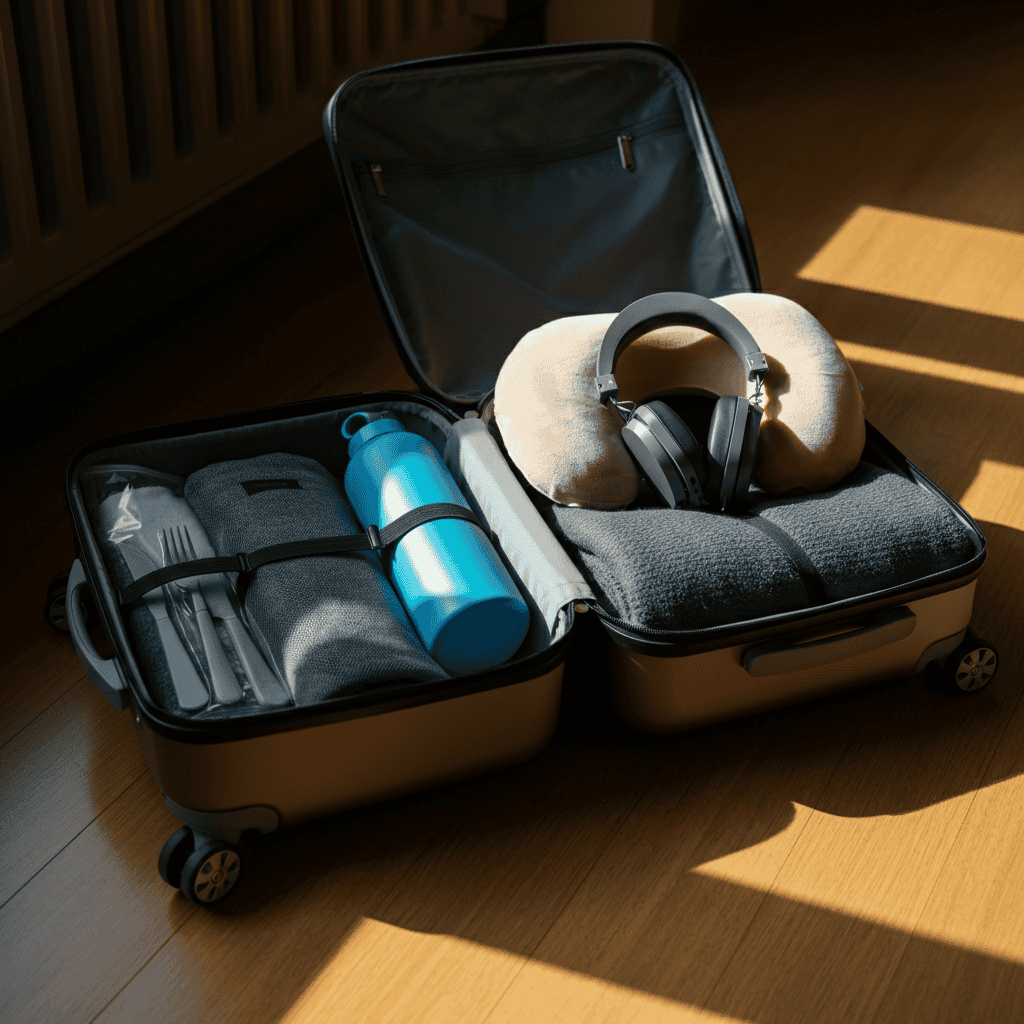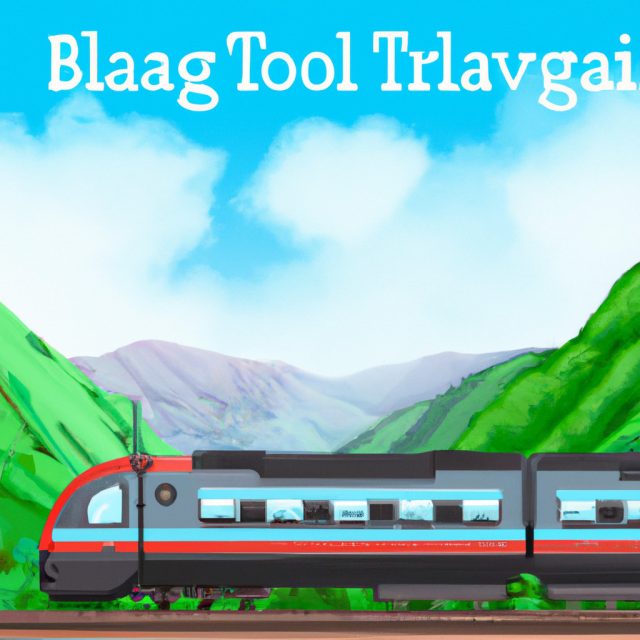Few forms of travel rival the romance, relaxation, and sheer spectacle of a scenic train journey. You gently rock through ever-changing landscapes, witness sunrise over mountain peaks, and make memories that last a lifetime. Whether you’re a seasoned rail enthusiast or planning your first long-distance trip by train, this guide will equip you with everything you need—from route selection and ticketing strategies to onboard comfort and eco-friendly tips.
From the snow-covered valleys of the Swiss Alps to the rolling vineyards of France, and the rugged highlands of Scotland to the expansive steppes of Siberia, the world’s rail network offers some of the most jaw-dropping panoramas you’ll ever see. Ready to step aboard? Let’s dive into how to plan your perfect scenic rail adventure.
1. Choosing Your Scenic Route
One of the greatest joys of train travel is the route itself. Iconic rail lines take you through ever-changing vistas—towering peaks, sapphire lakes, ancient forests, and canyons carved by millennia. Consider these bucket-list journeys:
- Glacier Express, Switzerland: Traverse deep gorges, snow-capped mountains, and charming alpine villages aboard a panoramic coach.
- Rocky Mountaineer, Canada: Experience the Canadian Rockies, lush valleys, and the Fraser Canyon in glass-domed comfort.
- Trans-Siberian Railway, Russia: Embark on the world’s longest continuous rail journey across eight time zones and varied landscapes.
- West Highland Line, Scotland: Wind past lochs, glens, and the iconic Glenfinnan Viaduct immortalized in film.
- Toy Train Routes, India: Climb UNESCO World Heritage hill railways in Darjeeling and the Nilgiri Hills for a nostalgic ride.
Research climate, seasonal conditions, and daylight hours. Winter journeys can be magical under fresh snow, while spring brings blooming valleys and wildlife sightings. Check operator websites for route maps, elevation profiles, and photo galleries to match your interests.
2. Best Times to Book
Securing tickets early often means better prices and seat choices. Here’s how to strike at the right moment:
- Advanced Booking: Reserve popular routes 3–6 months in advance, especially for high-demand seasons like summer or holiday periods.
- Off-Peak Travel: Shoulder seasons (spring and fall) often provide pleasant weather, lower fares, and fewer crowds.
- Flexible Dates: Use fare calendars and price alerts on booking platforms to spot discounts and flash sales.
- Group Discounts: Families and small groups can unlock special group rates—always inquire directly with the rail operator.
For last-minute adventurers, consider standby or table booking services on select routes, though availability is never guaranteed. Mobile apps often let you monitor seat releases in real time.
3. Types of Tickets & Passes
Understanding ticketing options ensures you maximize both budget and flexibility. Key choices include point-to-point fares, regional rail passes, and sleeper accommodations.
- Point-to-Point Tickets: Perfect for a few specific journeys; priced per segment and easiest to book online or at stations.
- Rail Passes: Unlimited travel within a country or region for a set period—Eurail, JR Pass (Japan), and BritRail are top examples.
- Seat Reservations: Mandatory on many scenic trains; reserve individual seats in advance to guarantee window views.
- Class Options: Economy or second class offers basic comforts at lower cost; first class includes perks like wider seats, quieter cars, and lounge access.
Some rail passes require activation at a ticket office or machine. Always verify whether reservations are included or must be purchased separately to avoid last-minute hassles.
4. Packing for Train Travel

Packing light and smart makes boarding and sleeping aboard a breeze. Aim for luggage you can handle on your own, combined with a small daypack for essentials.
- Travel pillow and lightweight blanket or shawl for cooler cars.
- Noise‐canceling headphones or comfortable earplugs.
- Reusable water bottle, healthy snacks, and compact cutlery.
- Portable charger, universal adapter, and extra batteries.
- Sanitizing wipes, hand gel, and a pack of facial tissues.
Keep valuables—passport, electronics, and wallet—in a small daypack you can carry into the carriage. If taking an overnight sleeper, bring a lightweight toiletry bag with travel-size items.
5. Onboard Comfort & Entertainment
A little forethought turns long journeys into comfortable retreats. Try these strategies:
- Window Seat Reservations: Ensure you’re positioned for panoramic views and brilliant photo opportunities.
- Offline Content: Preload e-books, playlists, podcasts, and movies for areas with spotty Wi-Fi.
- Stretch and Walk: Periodically stand up, walk to the café or observation car, and do light stretches.
- Engage with Staff: Conductors and on-board hosts can share insider tips about upcoming stops and local customs.
If the train has a dining car, sample local specialties—this is one of the best ways to taste regional cuisine without deviating from your route.
6. Capturing the Journey
Rail routes showcase some of the world’s most dramatic landscapes. To immortalize them:
- Clean the window before departure to reduce smudges in photos.
- Use fast shutter speeds or burst mode to capture crisp images of passing scenes.
- Portraits of fellow travelers add a human touch to your travel story.
- Aim for golden hour—plan to catch sunrise or sunset through station schedules or daylight calculators.
If you have a DSLR or mirrorless camera, a wide-angle lens lets you frame sweeping panoramas, while a telephoto lens brings distant peaks or wildlife into focus.
7. Budget vs Luxury Options
The beauty of train travel is its versatility. Budget travelers can find couchettes and shared seats for less, while those seeking indulgence can splurge on luxury trains.
- Standard Coaches: Practical seating, overhead storage, and sometimes communal tables—ideal for budget-minded explorers.
- Panoramic Cars: Extra‐large windows and sometimes glass roofs for unobstructed views.
- Overnight Sleepers: Compartments with folding beds, linens, and private washrooms on select routes.
- Luxury Train Services: Think the Venice Simplon-Orient-Express or Maharajas’ Express—sumptuous cabins, fine dining, and butler service.
Assess what matters most to you—comfort, privacy, or cost savings—and choose accordingly. Sometimes a mid-range option offers the perfect balance.
8. Safety and Health on the Rails
Traveling by train is generally safe, but staying vigilant ensures peace of mind:
- Guard Your Belongings: Keep valuables on your person or secure them in overhead racks with TSA-style locks.
- Stay Hydrated: Air-conditioned cars can be dehydrating—drink water regularly.
- Motion Sickness Aids: Ginger candies, pressure bands, or OTC medication help if you’re prone to nausea.
- Know Emergency Exits: Familiarize yourself with car layouts, emergency hammers, and staff instructions.
If you fall ill en route, most long-distance trains have a first-aid kit and conductors trained in basic medical protocols. Always carry a small travel health kit for minor injuries.
9. Cultural Etiquette & Local Interactions
Part of the magic of train travel is connecting with locals and fellow adventurers. A little courtesy goes a long way:
- Learn a few greetings and thank-you phrases in the local language—station staff appreciate the effort.
- Offer seats to elderly or disabled passengers when cars get crowded.
- Keep noise low, especially during early mornings and late nights—use headphones.
- Support local vendors if the train stops in smaller towns—buy a snack or souvenir.
Remember that each country has its own rules for luggage sizes, prohibited items, and security screenings. Research these in advance to avoid surprises.
10. Eco-Friendly Rail Travel
Choosing trains over planes or rental cars can significantly shrink your carbon footprint. To make your journey even greener:
- Daytime Routes: High-speed night trains often draw more power—opt for daytime when possible.
- Zero-Waste Snacks: Pack homemade sandwiches and refillable containers instead of single-use plastic.
- Digital Tickets: Download e-tickets to eliminate paper waste.
- Combine with Local Transit: Use trains plus buses or bikes at your destination to minimize car usage.
Rail operators increasingly invest in greener technologies—from regenerative braking to biofuel locomotives. By choosing the rails, you support a more sustainable travel industry.
Conclusion
Scenic train travel is more than just transportation; it’s a journey through time, culture, and nature at a human pace. With careful planning—choosing the right route, booking wisely, packing smart, and embracing local customs—you’ll unlock experiences that no airplane window can ever rival.
Whether you’re planning your first journey or your fiftieth, it’s time to let Adventure Travel Unleashed guide your next great rail escape.
All aboard for your next epic rail adventure!
Learn more about: Voluntourism Unveiled: Your Complete Guide to Traveling with Purpose














